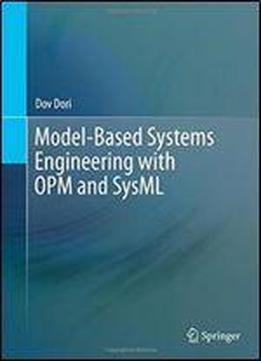
Model-based Systems Engineering With Opm And Sysml
by Dov Dori /
2016 / English / PDF
25.1 MB Download
Model-Based Systems Engineering (MBSE), which tackles architecting and design of complex systems through the use of formal models, is emerging as the most critical component of systems engineering. This textbook specifies the two leading conceptual modeling languages, OPM?the new ISO 19450, composed primarily by the author of this book, and OMG SysML. It provides essential insights into a domain-independent, discipline-crossing methodology of developing or researching complex systems of any conceivable kind and size. Combining theory with a host of industrial, biological, and daily life examples, the book explains principles and provides guidelines for architecting complex, multidisciplinary systems, making it an indispensable resource for systems architects and designers, engineers of any discipline, executives at all levels, project managers, IT professional, systems scientists, and engineering students.Authors: Dori, Dov
An indispensable MBSE reference, compatible with OPM ISO 19450 and OMG SysML that fosters deep systems thinking amongst students and systems engineering professionals
Provides a holistic, formal, yet intuitive approach to developing and evolving complex systems, embedded systems, and systems of systems that can comprise humans, hardware, software, and regulations, which can be physical and cybernetic components, operating in harmony with the environment
Each chapter concludes with a succinct summary and a problem set, solvable using a freely available modeling software, downloadable from
Model-Based Systems Engineering (MBSE), which tackles architecting and design of complex systems through the use of formal models, is emerging as the most critical component of systems engineering. This textbook specifies the two leading conceptual modeling languages, OPMthe new ISO 19450, composed primarily by the author of this book, and OMG SysML. It provides essential insights into a domain-independent, discipline-crossing methodology of developing or researching complex systems of any conceivable kind and size. Combining theory with a host of industrial, biological, and daily life examples, the book explains principles and provides guidelines for architecting complex, multidisciplinary systems, making it an indispensable resource for systems architects and designers, engineers of any discipline, executives at all levels, project managers, IT professional, systems scientists, and engineering students.
Number of Illustrations and Tables
175 b/w illustrations
Topics
Programming Languages, Compilers, Interpreters











